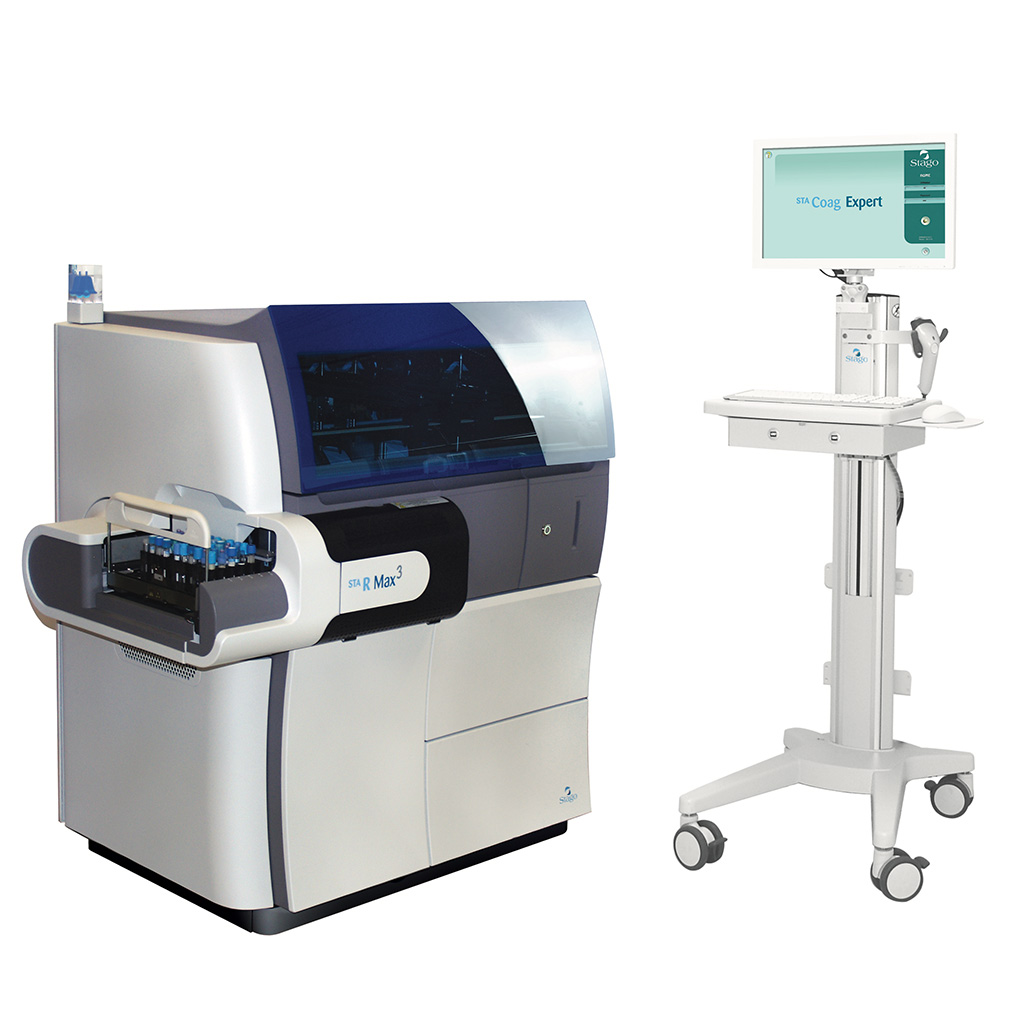D-Dimer and Thrombosis Risk in Adult Acute Lymphoblastic Leukemia
Posted on 07 Sep 2022
D-dimer is a marker of fibrinolysis harkening the presence of or risk for thrombosis, and it has been found to be a powerful predictor of thrombosis in solid cancers and acute myeloid leukemia (AML).
Patients with acute lymphoblastic leukemia (ALL) are at increased risk of thrombotic and/or bleeding events during early chemotherapy, especially when receiving asparaginase. Rates of venous thromboembolism (VTE) in ALL vary across studies, ranging from 1% to 36%, with the majority of studies reporting rates in the 5% to 20% range over a 1- to 3-year follow-up period.

A team of medical scientists led by The University of Chicago (Chicago, IL, USA) team identified 61 consecutive adult patients with newly diagnosed ALL from a single center between January 2008 and March 2020. They gathered demographic characteristics, treatment regimens, initial biomarkers including D-dimer, and assessing occurrence of venous or arterial thrombosis and bleeding in the first 100 days after diagnosis (index). The median age overall was 36 years (range, 18-84 years), with 52% female.
The D-dimer assay is ordered routinely at diagnosis of ALL at The University of Chicago Medical Center as a plasma assay and performed using photometric immunoassay analysis on a STA R Max analyzer (Diagnostica Stago, Inc, Parsippany, NJ, USA) within six hours of blood draw. Patients were stratified into two groups according to index D-dimer level using a cutoff of ≥4 µg/mL fibrinogen equivalent units (FEU) (high) and <4 µg/mL (low to moderate) based on previous work examining D-dimer and thrombosis in AML and the cutoff used in the disseminated intravascular coagulation (DIC) score.
The investigators reported that in the study cohort of patients with ALL, of whom 17 (28%) had high (≥4 µg/mL FEU) D-dimer levels at index, and 44 (72%) had low to moderate (<4 µg/mL FEU) index D-dimer levels. The 100-day cumulative incidence (95% confidence interval [CI]) of venous or arterial thrombosis in patients with high D-dimer (≥4 µg/mL) was 52.9% (95% CI, 26.4-73.8) compared with 13.8% (95% CI, 5.5-25.7) in patients with low to moderate D-dimer (<4 µg/mL), corresponding with a hazard ratio of 5.04 (95% CI, 1.79-14.22). When testing for potential confounders in a series of bivariate logistic regression models, the association between D-dimer and thrombosis remained after adjusting for body mass index, age, sex, asparaginase treatment, disseminated intravascular coagulation score, initial platelet level, and ALL phenotype.
The authors concluded that D-dimer levels at ALL diagnosis were associated with venous or arterial thrombosis at 100 days. Future studies should include D-dimer collated with other known risk factors to build a risk assessment model for thrombosis in patients newly diagnosed with ALL. The study was published on September 1, 2022 in the journal Blood Advances.
Related Links:
The University of Chicago
Diagnostica Stago














